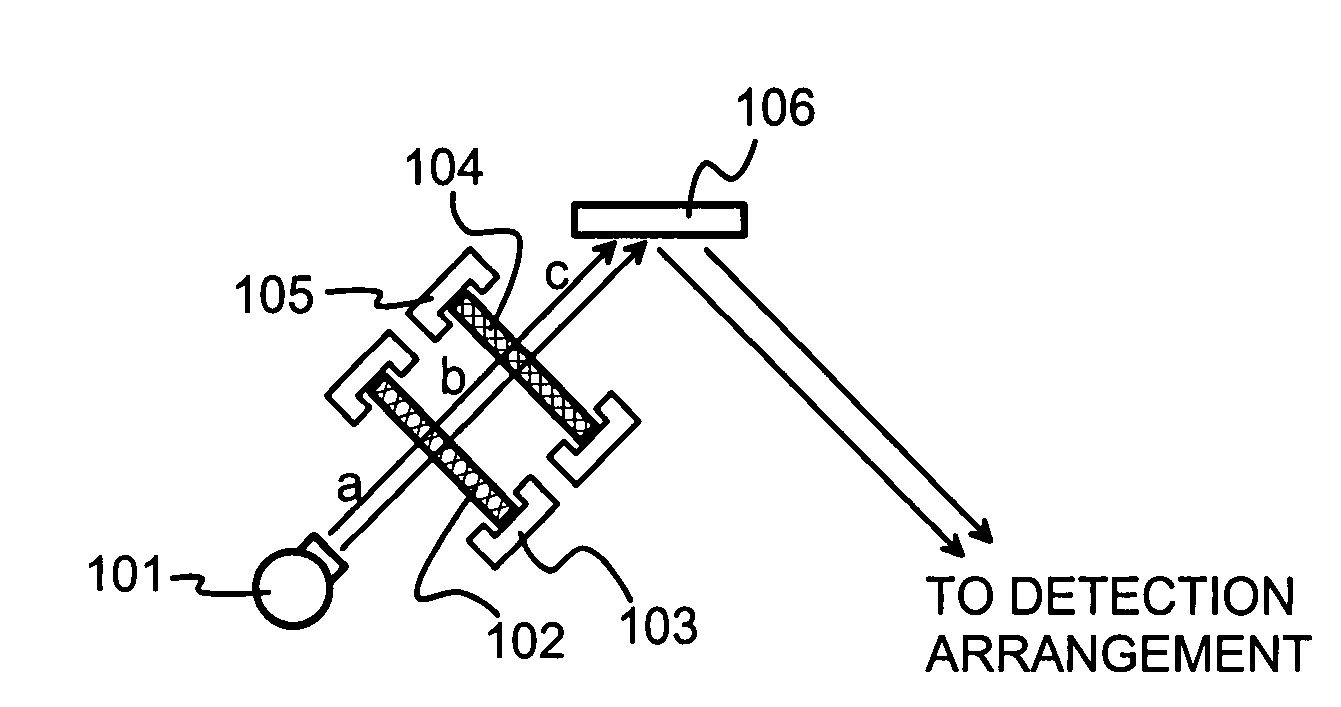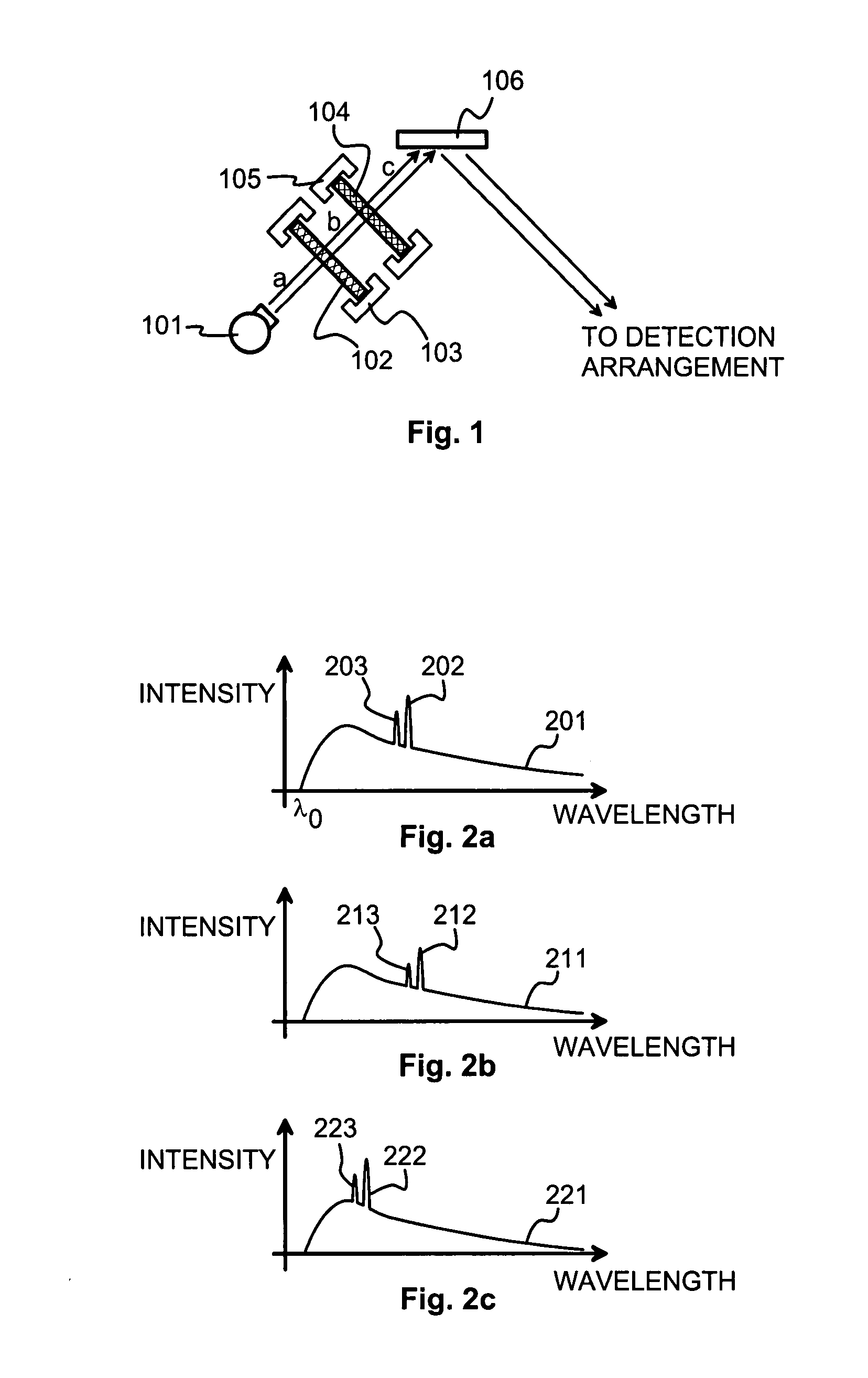Filter for x-ray radiation, and an arrangement for using filtered x-ray radiation for excitation
a filter and radiation technology, applied in the field of x-ray fluorescence analysis, can solve problems such as difficult spectral deconvolution
- Summary
- Abstract
- Description
- Claims
- Application Information
AI Technical Summary
Benefits of technology
Problems solved by technology
Method used
Image
Examples
Embodiment Construction
[0027]FIG. 1 illustrates schematically certain parts of an X-ray fluorescence analyzer device. An X-ray tube 101, which here is schematically shown as being of the side window type but which could also be of the end window type, acts as the source of incident X-rays. FIG. 2a illustrates schematically the intensity of the incident X-rays at location a in FIG. 1 as a function of wavelength. The continuous curve 201 illustrates the bremsstrahlung part of the incident X-rays. The shortest wavelength limit λ0 comes from the acceleration voltage of the X-ray tube 101, and any characteristic peaks (of which exemplary peaks 202 and 203 are shown in FIG. 2a) correspond to the electron shell structure of the anode material used in the X-ray tube 101. Here we assume that the anode material is tungsten, and the peaks 202 and 203 occur at 1.48 and 1.28 ångströms corresponding to the L-line energies 8.39 keV and 9.67 keV of tungsten respectively.
[0028]In the following we use the expression “filte...
PUM
| Property | Measurement | Unit |
|---|---|---|
| thickness | aaaaa | aaaaa |
| thickness | aaaaa | aaaaa |
| thickness | aaaaa | aaaaa |
Abstract
Description
Claims
Application Information
 Login to View More
Login to View More - R&D
- Intellectual Property
- Life Sciences
- Materials
- Tech Scout
- Unparalleled Data Quality
- Higher Quality Content
- 60% Fewer Hallucinations
Browse by: Latest US Patents, China's latest patents, Technical Efficacy Thesaurus, Application Domain, Technology Topic, Popular Technical Reports.
© 2025 PatSnap. All rights reserved.Legal|Privacy policy|Modern Slavery Act Transparency Statement|Sitemap|About US| Contact US: help@patsnap.com



